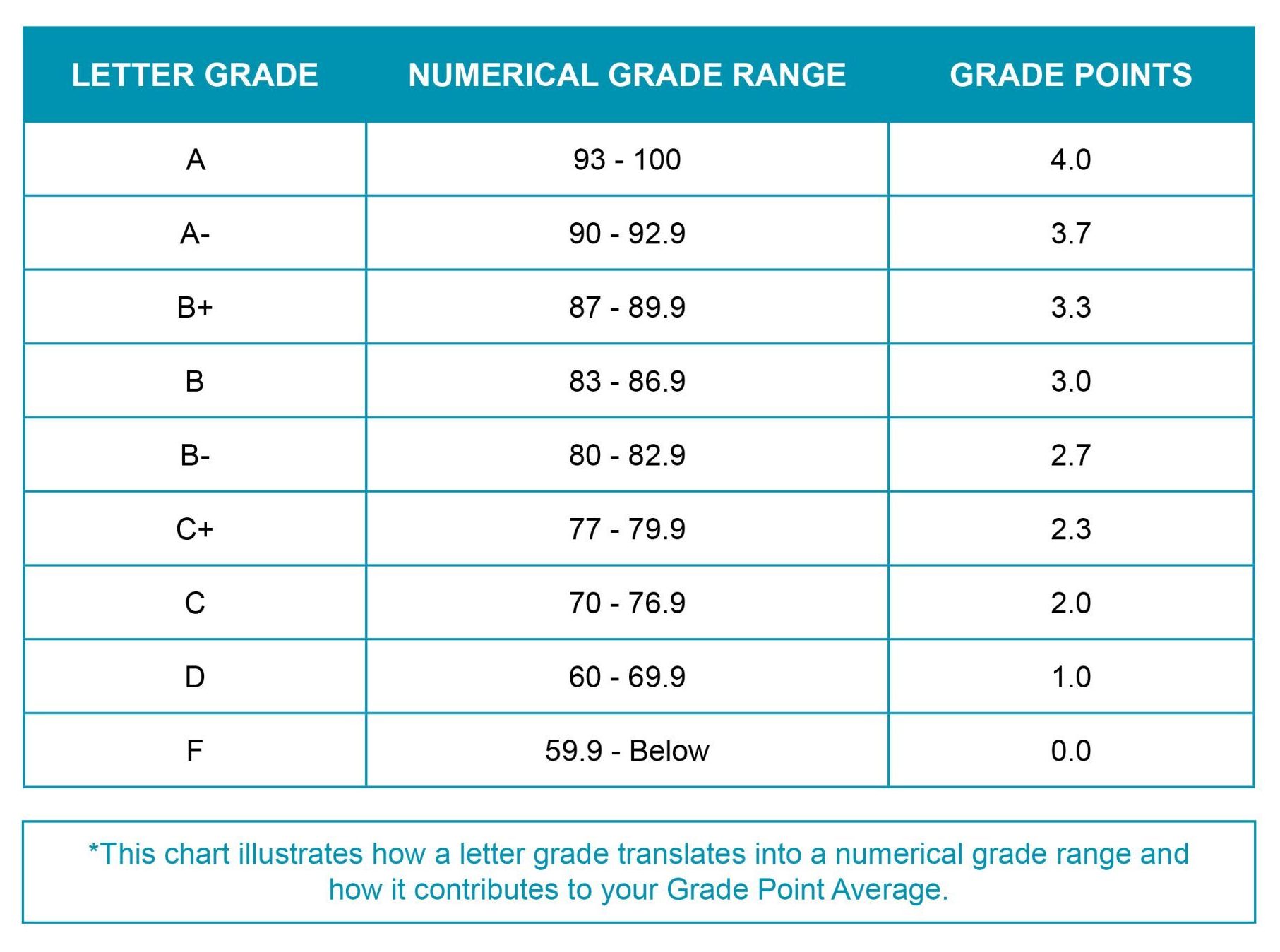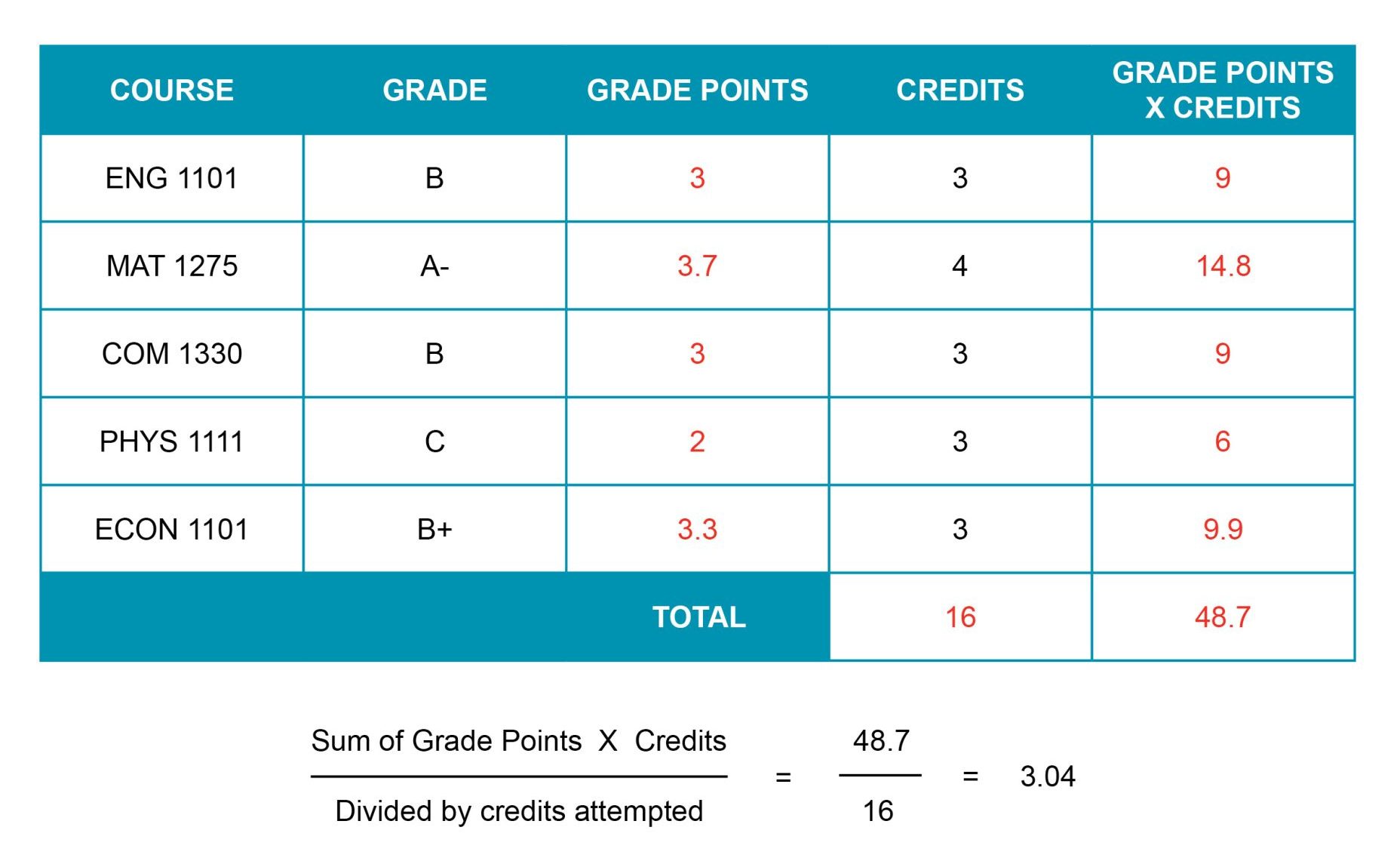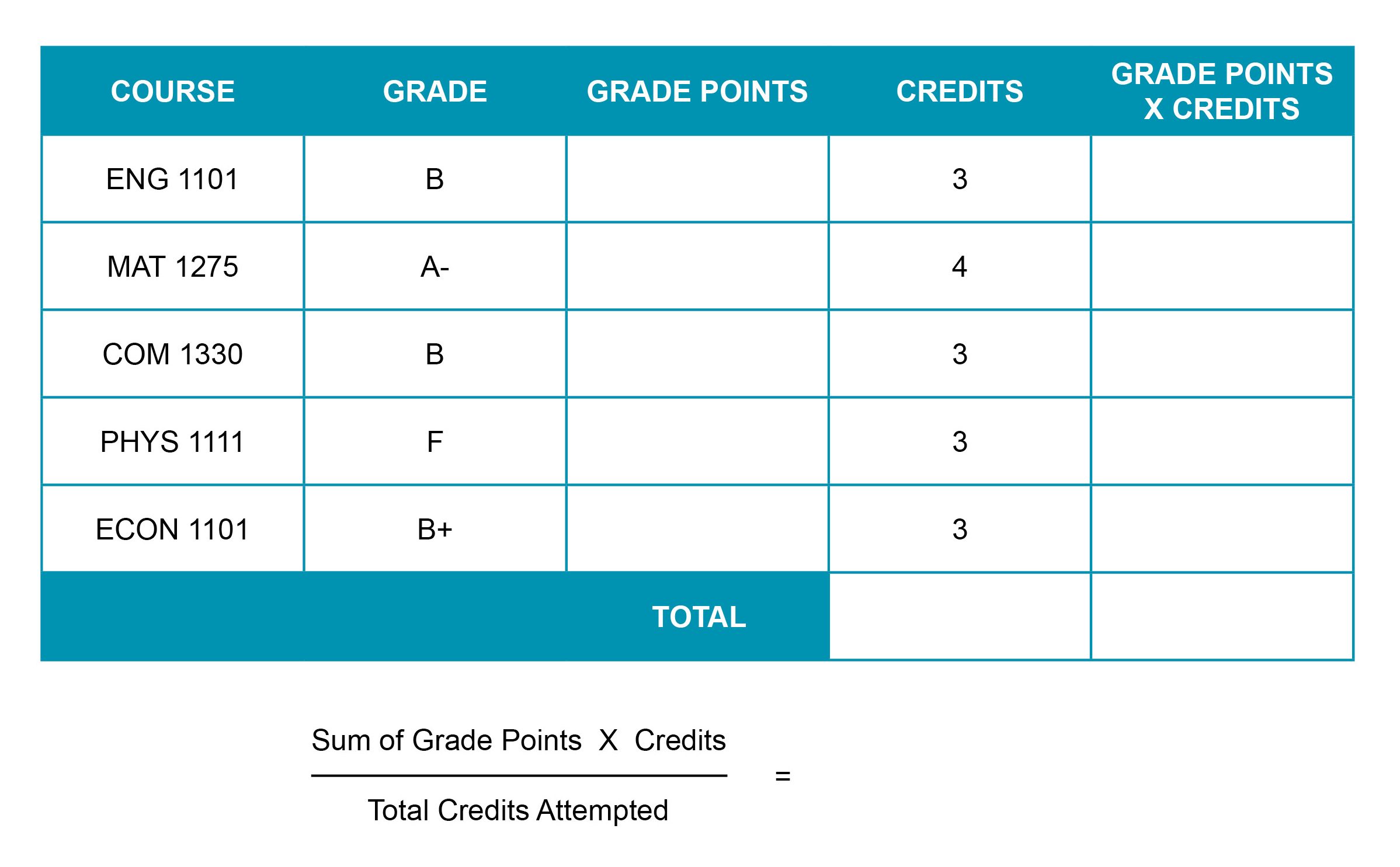
Midterm Grades
During or before the eighth week of the semester, each of your professors will provide you with a midterm grade. This is an overall reflection of how you are doing in the class so far, and it is distinct from any grades you might receive on midterm exams or projects. The midterm grade is purely for your own information—it will not appear on your transcript or be calculated into your grade point average (GPA).
Midterm grades use the following scale, which differs from the letter grades that you will receive at the end of the semester:
P=Making Satisfactory Progress
N=Needs Improvement
SA=Stopped Attending
These midterm grades are estimates, as opposed to precise grade calculations, but if you receive a P that means your average for the first half of the semester is in the C, B, or A range. You’ve made a good start…but think about what you can do in the second half of the semester to make sure you end up with an A!
An N at midterm shows that you are currently earning a grade of D or F. Speak with your professor, either via email or in office hours, to discuss what you can do differently to improve your grade in the second half of the semester.

A grade of SA indicates that you have missed so many class sessions that the professor believes you are no longer attending the class. If you do wish to remain in the class, reach out to the professor immediately to let them know that you intend to return. Apologize for your absences, explain any extenuating circumstances, and ask what you can do to catch up and complete the class successfully. If you’ve decided not to continue attending the class, do the responsible thing and complete the steps to officially Withdraw.
Midterm grades are not a guarantee of what your grade will be at the end of the semester, but they are a useful indicator of your progress. Use them to help you determine if your current study strategies are working or if you need to make changes for the second half of the semester in order to earn the grades you want to receive.
A Closer Look at Your Grades
We recommend taking a closer look at how you are doing in each class, even if your midterm grades all indicate satisfactory progress. After all, there’s a considerable difference between a C and an A!
Understanding your grades can be challenging at first, because different professors have different ways of calculating and keeping track of grades. At the end of the semester, you’ll receive letter grades on a scale ranging from A to F. During the semester, though, some professors will use letter grades for individual assignments, others will provide a percentage, and still others will assign a point value to each assignment.
Many professors use Brightspace as an online management system, which means that your grades for each assignment will be posted on your class Brightspace site, while others use OpenLab or another system. It’s a very good idea to check your grades regularly, both to see how you’re doing and to make sure there aren’t any errors. Your professors will do their best to keep complete and accurate records of your grades, but they may occasionally miss a completed assignment. Or you may have finished an assignment but submitted it in the wrong place (or forgotten to submit it at all) and not received credit for it. If you discover a missing or incorrect grade, respectfully bring it to your professor’s attention, and re-submit anything that didn’t go through correctly the first time.
You may see a grade in Brightspace called “Weighted Total.” This is helpful because it keeps track of your overall average as you complete each assignment. If this grade isn’t available, you may need to look at each individual assignment grade to calculate your average in the class.
It can be eye-opening to check your grades and see how the assignments add up to your overall average. For instance, you might have done very well on major assignments and exams, but missed a lot of smaller assignments. Those smaller assignments, taken together, can have a large impact on your overall grade. On the other hand, you may have been doing well on homework assignments but struggled on a midterm exam and ended up with a lower grade than you hoped.
Checking on your grades will help you plan for the rest of the semester. This could mean making a deal with yourself to complete all short assignments, or deciding that you will start studying earlier before your next exam.

Understanding Grade Point Averages
Your overall performance in college will be measured by your grade point average, or GPA. This is the number that determines your eligibility for honors like the Dean’s List, and it is also what the college uses to judge if you are in good academic standing. Students generally need to maintain a GPA above 2.0 (the equivalent of a C average) to avoid being placed on Academic Alert or Academic Probation.
GPA is determined using the following steps: First, for each of your classes multiply Grade Points X Credits. Then, add up the sum of Grade Points X Credits and divide by the total number of graded credits attempted.
See below for an example of this calculation:

The student in this example is earning a GPA of 3.04, a B average, so far this semester.
Exercise 5.2: GPA Calculations
Now, imagine that the student in the example above decided their physics class was just too hard. After a discouraging grade on the midterm exam, they stopped studying for the class and finished the semester with an F in PHYS 1111. Complete the calculation in the chart below to see the impact of an F on the student’s overall GPA.


Let’s do another calculation, this time with your own grades. Using the chart below, enter your courses and the grades that you are currently earning. Look up the number of credits for each class (you can find this information listed on your schedule in CUNYfirst) and enter this as well. Complete the GPA calculation to determine the overall GPA that you are earning at this point in the semester.

Click to download a fillable document: Exercise 5.2: GPA Calculations
Exercise 5.3: Midsemester Reflection
Are you happy with how you are doing in your classes so far this semester? If not, list two changes you can commit to making in order to improve your grades as the semester continues:
Click to download a fillable document: Exercise 5.3: Midsemester Reflection
An official record of all courses and credits a student attempted and the grades earned while attending college.
Average of grades from all courses taken at City Tech, expressed on a 4 point scale. Students will receive a GPA for each semester. See also Cumulative GPA (CUM GPA).
The grade “W” is assigned when a student officially withdraws from a class after the end of the Program Change period but before the withdrawal deadline. The course and grade of W will appear on the student’s transcript, but the GPA will not be affected. However, the student will remain responsible for paying the tuition for the class.
An academic honor awarded to matriculating students who have a grade point average of 3.6 or higher with no failures, incompletes, R’s, WU’s, or WN’s. Also called the Dean's Honor List.
This status occurs as a warning to new students during their first 18 college credits. A student will be placed on Academic Alert if their grade point average (GPA) is below 1.5 while attempting up to their first 12 credits and 1.75 while attempting between 13 and 18 credits. This signifies that a student must raise their GPA to avoid being placed on Academic Probation once they have exceeded the 18 credit warning period. It is time to work harder and to get help.
This status indicates that a student is not meeting the college's minimum GPA standard and has one semester to improve their grades. If a student on probation earns less than a 2.25 GPA (approximately a C+ average) for the semester, that student will be dismissed from the college. Students placed on Academic Probation may not be eligible for financial aid. Students on Academic Probation are urged to seek help from an academic advisor, the Counseling Center, and/or the Student Success Center.
Units earned for successfully completing a course. Most courses have a value between 2-4 credits. The number of credits that appear on a transcript may be different from the number of hours spent in class.
